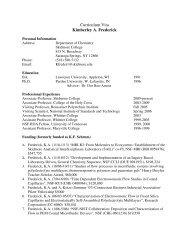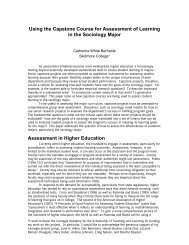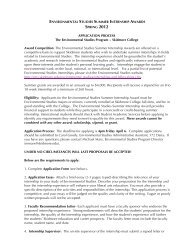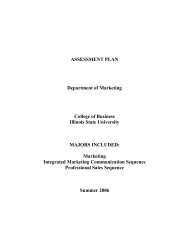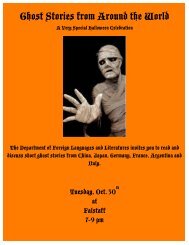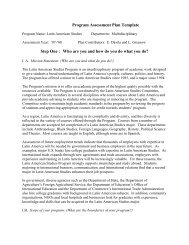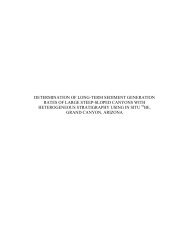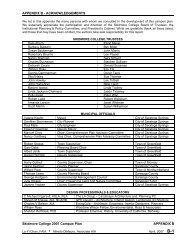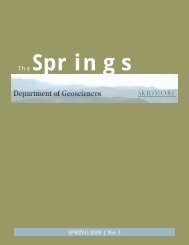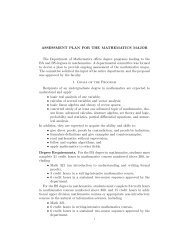Example 2 - Skidmore College
Example 2 - Skidmore College
Example 2 - Skidmore College
You also want an ePaper? Increase the reach of your titles
YUMPU automatically turns print PDFs into web optimized ePapers that Google loves.
would inevitably become the “born at the surface” pavement around my soil pit. Thus,<br />
incised channels play an important role in the depositional history and eventual formation<br />
of desert pavement of the Kofa Mountain Piedmont. By better quantifying the timing of<br />
deposition and stability of the subsurface, one can better quantify the rate of pavement<br />
formation.<br />
Cosmogenic Nuclides:<br />
Cosmogenic nuclide analysis is a relatively new and increasingly valuable<br />
technique used in geomorphology. Aside from soil pits, cosmogenic nuclides have been<br />
measured in order to date marine terraces (Perg, 2001), landscape stability (Bierman,<br />
1994), and upland erosion (Beirman and Steig, 1996, Clapp et al., 2001). Cosmogenic<br />
10 Be and 26 Al nuclides are produced from secondary cosmic rays (particularly high-<br />
energy neutrons) that enter our atmosphere and interact with oxygen and silicon<br />
respectively. Therefore, quartz is an ideal target material. Production (within quartz<br />
grains) of these nuclides decreases exponentially with depth (Lal and Arnold 1985) and<br />
have minimal production at depths >3m from the Earth’s surface (Figure 6). At the<br />
surface of the Earth, 26 Al and 10 Be nuclides are produced at a ratio of 6:1 respectively.<br />
26 Al nuclides have a half-life of 7.0 x 10 5 years and 10 Be nuclides have a half-life of 1.5 x<br />
10 6 years. Since production is minimal at depths >3 m, decay of the nuclides is faster<br />
than production. Given sufficient time (>100,000 yrs.) the activity of 26 Al will be less<br />
(due to a shorter half-life) than the activity of 10 Be for deeply buried sediments and the<br />
26 Al/ 10 Be ratios will deviate from 6/1. Therefore, by measuring both nuclides, 26 Al/ 10 Be<br />
in quartz grains can yield the near-surface history of the quartz-bearing soils.<br />
4



